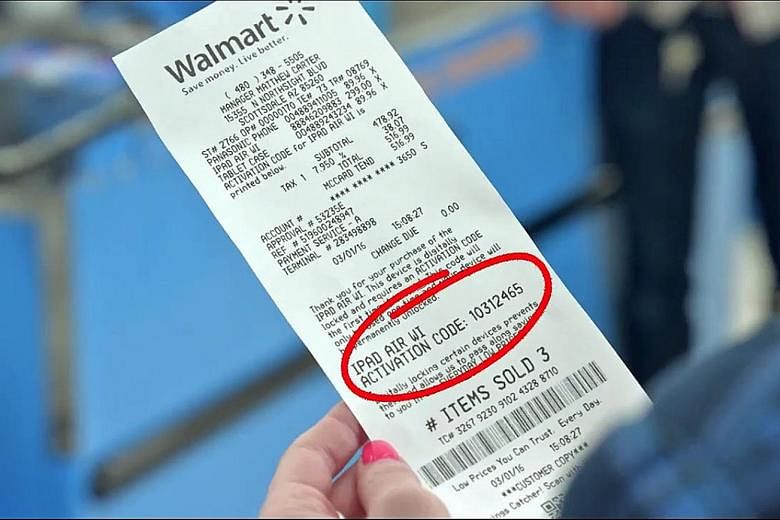An anti-theft system developed by a Singapore-based firm has successfully completed a 30-day trial with giant American retailer Walmart.
The system developed by Digital Safety (DiSa) does away with the need for security devices to be attached to products. It works by assigning a personal identification number (PIN) code to each item - consumer electronics, in particular - at the point when they are manufactured.
The item will be "locked" by the time it reaches a Walmart shelf, which means it can be displayed without the usual safeguards, such as anti-theft cords, that often deter customers from trying out a product.
When a consumer buys the product, he gets a unique code to unlock it. Without the code, the device is effectively useless.
The Walmart store in Arkansas used the system on 70 tablet computers and managed to sell the lot in less than 30 days "during a lull period in September", said Mr Eddie Chng, chief executive of DiSa's parent company, Equation Summit, which is listed on Catalist.
Equation Summit had announced on Thursday that a hearing for the winding-up application of its unit, Equation Resources, by Goodhill Enterprise was adjourned to Dec 1, but Mr Chng noted that this would not affect DiSa.
He said: "The dispute was over a barge from 2013, where Goldhill was trying to claim $400,000. It is better for the subsidiary to be wound up as we are restructuring and planning to de-emphasise our remaining businesses to focus on DiSa."
The plan is for DiSa to work with Walmart suppliers - who are charged for each code produced by DiSa - in the first quarter of next year. DiSa will be busy in the United States for the next 18 months, while looking at going into Canada and Mexico and maybe Europe by 2020.
Said Mr Chng: "Retail is not going away tomorrow and now is a good time to rejuvenate the retail sector, and the US economy is growing. People still like to touch and feel their products."
He added: "A lot of items on display are locked up and that defeats the purpose of the retail experience, where consumer want to touch and try the item, and simply take it to the counter.
"But with high pilferage, stores are unable to leave items on shelves. During the trial, we discovered that by leaving the products on the shelf with no locks and such, it lifted sales."
He noted that out of more than 4,500 Walmart stores in the US, the Arkansas outlet had been ranked 2,700 in tablet sales. After the 70 tablets sold within a month, the store was pushed up to 9th position.
Mr Chng said the system will be used next month at 20 Walmart stores, on 70 tablets each. "This is to gauge the consumers' response. We think the tablets will be sold quickly, especially since it is the Christmas period, and after that it could be rolled out in all stores."
In the next few months, the plan is to start using the system for five product categories in Walmart - computing, smartphones, televisions, bluetooth speakers and "connected homes", which include smart products. Mr Chng said the firm is working with online merchants as well.


